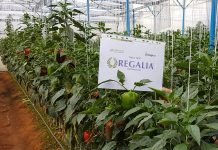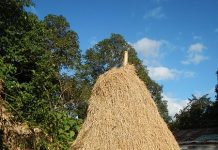Jim Lane
Can PetroAlgae find a market for its feed among the aficionados of alfalfa and fishmeal, with fuels on the side?
In its recent IPO revision, it says “sure can”.
![04[1].jpg](http://www.altenergystocks.com/wp-content/uploads/2017/08/04_1_.jpg)
In Florida, PetroAlgae (PALG.PK) has filed a massive revision to its S-1 registration for a proposed initial public offering.
The company is currently ranked #55th in the world among the Hottest Companies in Bioenergy. The rankings recognize innovation and achievement in fuels and are based on votes from a panel of invited international selectors, and votes from Digest subscribers.
PetroAlgae, which in the year to date has lost $19.05M while recording no revenues, is one of 13 companies that have filed for an IPO in the industrial biotech boom, which began with a successful listing on the NASDAQ by Codexis (CDXS) in 2010. IPOs by Amyris (AMRS), Gevo (GEVO), Solazyme (SZYM), and KiOR (KIOR) have followed. In recent months, Bioamber, Myriant, Ceres, Genomatica, Mascoma and Elevance Renewable Sciences and Fulcrum Bioenergy have also filed S-1 registrations for proposed IPOs.
Here’s the S-1 registration, in a conveniently downsized 10-minute Digest version – with some commentary along the way as to what is driving value in the PetroAlgae model, opportunities for the intrepid investor, and some risks which we have translated from the ancient and original SEC into modern English.
Company Overview
From the S-1: “We provide renewable technology and solutions to address the global demand for new economical sources of feed, food and fuel.
Our objective is to be the leading global provider of technology and processes for the commercial production of micro-crop biomass. We have developed proprietary technology, which we believe will allow our customer licensees to grow aquatic micro-crops at accelerated rates for conversion into products for both agriculture and energy markets. Our strategy is to license and provide management support for micro-crop production facilities in equatorial regions around the world…We intend to generate revenue from licensing fees and royalties primarily from customer licensees.”
The Model
From the company’s most recent 8-K: “On October 25, 2011, PA LLC entered into an amended and restated license agreement with AIQ…The Agreement provides for three separate phases: the Preliminary Phase, Phase I and Phase II.
“In the Preliminary Phase, AIQ will construct and operate a pilot-scale bioreactor of 0.75 hectares to test and demonstrate the growth and harvesting aspects of the Company’s technology. If the parties agree that the Preliminary Phase has been operated successfully, the Company and AIQ will proceed to Phase I, during which the first commercial-scale unit increment of 150 hectares…The Company has agreed to construct the 150 hectare commercial growth unit on a turnkey basis. In Phase II, AIQ will continue to expand the project in 150 hectare unit increments, including growth, harvesting and processing modules, until the facility forms a unit of up to 5,000 hectares. …The Company will receive a royalty on net sales of the products generated from every unit and unit increment during the 20-year term of the license.”
The Costs
From the S-1: “The estimated capital expenditure for a 150 hectare facility as an entry point is $12 million (excluding the cost of land and improvements)a model that we believe involves manageable costs, risks and build-out times…Due to economies of scale, we believe that a 600 hectare unit would deliver an attractive internal rate of return on our customer licensees’ investment. Ultimately, we expect that our customer licensees will expand their facilities in 150 hectare increments at similar costs in order to complete facilities of up to 5,000 hectares. Depending on economies of scale, we expect that the capital expenditure for a 5,000 hectare facility will be approximately $375 million (excluding the cost of land and improvements).”
The Technology
From the S-1: “Our proprietary technology uses indigenous micro-crops that are not genetically modified and demonstrate an optimal growth profile for a particular geography and environment. These micro-crops will then be grown, harvested and processed in a manner that we believe will optimize the production of our micro-crop biomass, which our customer licensees can use to produce three products.
Our technology platform primarily consists of four components: micro-crop selection and testing, growth and harvesting techniques, processing technology, and control systems….we have developed a scalable and flexible model based on micro-crop growth units of 150 hectare increments.”
The Products
From the S-1:
Lemna Protein Concentrate, or LPC: LPC is a free-flowing powder containing a minimum 65% crude protein. We expect that our customer licensees will manufacture LPC for use in both animal and, potentially, human markets. Based on internal and third-party testing, we believe that LPC is similar in quality to fish meal. We believe that LPC can also be used as an alternative to kelp meal in fertilizer applications. Based on research conducted by the University of Idaho, we believe that LPC is strongly positioned as a fish meal alternative due to its nutritive qualities.
Lemna Meal, or LM: LM is a carbohydrate-rich free-flowing powder containing a minimum 15% crude protein. We expect that our customer licensees will manufacture LM for use in animal feed markets. We also believe that LM could be used in fertilizer and animal bedding applications. Trials conducted by the University of Minnesota demonstrated that LM is a high quality alternative for alfalfa meal in diets for dairy cattle. Third-party testing is continuing with other animals that are customarily fed alfalfa, such as swine and horses.
Biocrude: With a small change in process parameters (but not equipment), our processing system can produce Biocrude rather than LM. Biocrude is a renewable energy feedstock that, through the use of a variety of third-party conversion systems currently under development, could potentially be converted into renewable fuels.
Fortification of Basic Human Food Products: We believe that LPC can eventually serve the global market for fortification of basic food ingredients for malnourished populations, particularly in developing and emerging countries. In the long term, we believe we can develop a higher protein content product from lemna using alternative separation techniques.
The Market
From the S-1:
Fish Meal: Fish meal, most of which is produced by the commercial fishing of wild schools of small fish, is a critical ingredient in the diets of nursery
animals and aquaculture stocks. Global fish meal demand for aquafeed is expected to reach approximately 7 million metric tonnes in 2012 and to rise every year thereafter to approximately 16 million metric tonnes in 2020, a rate which is expected to significantly outpace supply.
Alfalfa meal: Alfalfa meal is a premium forage ingredient, used to meet nutrition and growth requirements in numerous animal diets. For dairy and swine alone, the global demand for alfalfa meal will be approximately 254 million metric tonnes in 2012, rising every year thereafter to approximately 262 million metric tonnes in 2020.
The Strategy
From the S-1:
1. Rapid deployment and support of modular and highly scalable license units.
2. Leveraging our capital-light licensing model.
3. Expansion of our customer base on a global scale.
4. Further development of our technology and pursuit of additional applications for our products.
5. Assisting our customer licensees in the identification of off-take partners.
6. Creation of brand loyalty.
The Risks, Translated from SEC-speak
Among the lowlights of reading S-1 registrations are the endless pages of risk disclosures couched in an alloy of SECspeak and legalese. We offer these excerpts from the original S-1, and a translation into English, prepared by our Digest lexicologists.
In SECSpeak: We are a development stage company. As a result, we have no significant history of revenues, operating or net income, cash flows or the other financial performance metrics that will affect the future market price of our common stock.
In English: Drats! Since 2006, that kiddie lemonade stand down the road has consistently outsold us.
In SECSpeak: We expect that some of the contracts with our initial early-adopter customer licensees will provide for the build-out of a turnkey license unit of 150 hectares after the successful completion of the testing phase of our technology…Because our customer licensees’ payments will be capped, we will bear the responsibility for construction costs in excess of those anticipated, which could cause us to suffer significant losses on these license units.
In English: We get to write the check if any of these projects turn into a money pit. Using, er, your money.
In SECSpeak: Our initial contracts are or will be subject to significant conditionality, including that the pilot-scale facilities built by our customer licensees achieve certain minimum levels of projected investment return, and the failure to meet these conditions may lead to the termination of these contracts.
In English: Our little lemna may not go forth and multiply at exactly the rate at which we need them to.
In SECSpeak: Although we have successfully built a fully operational demonstration facility (approximately one hectare) and have extracted small field-scale quantities of LPC, LM and Biocrude for technical validation, we have not demonstrated that our technology is viable on a commercial scale, which we define to mean an operation consisting of at least 150 hectares.
In English: Your backyard may be larger than our current global acreage.
In SECSpeak: Market acceptance of our LPC and LM will be a function, among others, of digestibility and palatability (the assessment of which will require additional laboratory and field study). Should these studies not proceed favorably, the market for our LPC and LM may not materialize or could be materially diminished.
In English:
Scenes from PetroAlgae Heaven, or, Why Mikey the Little Bull better like it.
Scene: A breakfast table in a tropical pastureland. Three calves encounter a box of LemnaMeal.
Calf #1: What’s this stuff?
Calf #2: Something called lemna. It’s supposed to be good for you.
Calf #1: Did you try it?
Calf #2: I’m not gonna try it. You try it.
Calf #1: I’m not going to try it.
Calf #2: Let’s get Mikey to try it. He hates everything.
Calf #1: Yeah, he hates everything.
(Mikey the Little Bull munches, ruminates, smiles in a bull-ish sort of way, then begins consuming lemna meal vigorously)
Cow #2: He likes it! Mikey likes it!
Voiceover: If you love LemnaMeal just like Mikey the Little Bull, have we got an alfalfa alternative and a hot IPO stock for you.
In SECSpeak: Patents are a key element of our intellectual property strategy. We have currently filed patent applications for six families of technologies, both in the United States and in foreign jurisdictions…Our patent applications are in the early stages and we have not received substantive feedback from relevant patent offices regarding the viability of our patent applications.
In English: Our technological advantage may, in the future, be freely downloadable from the internet.
In SECSpeak: Most of our planned production capacity will be in equatorial regions around the world, which will limit the number of prospective customer licensees willing to license our technology, and our business will be adversely affected if we do not operate effectively in those regions…operations of our customer licensees generally should be within approximately 15 degrees of latitude from the equator for optimal performance.
In English: Our showcase customer prospect, AIQ, operating in a country located between the 17th and 56th parallels, may not have received the information about 15th parallel viability in exactly the same manner as you have.
In SECspeak: The initial public offering price will be substantially higher than the pro forma net tangible book value of each outstanding share of our common stock immediately after this offering. If you purchase our common stock in this offering, you will suffer immediate and substantial dilution. If previously granted warrants or options are exercised, you will experience additional dilution.
In English: Victory has a zillion shareholders who will pop up out of the woodwork with options and warrants, defeat has a bunch of senior debt that will subordinate and crush you.
PetroAlgae as it sees itself: 7 Competitive Strengths
From the S-1:
1. Strong economic returns to our customer licensees without the need for government subsidies.
2. Highly scalable and flexible technology, with initial license units providing the basis for larger-scale operations in the future.
3. Fully integrated, comprehensive solution that transforms simple, naturally occurring inputs, such as sunlight, water and indigenous micro-crops, into valuable outputs.
4. Product compatibility with the existing agriculture infrastructure.
5. First mover advantage in providing renewable micro-crop technology to produce products that serve the global animal feed market.
6. Experienced management team with a track record of innovative growth, value creation and commercial scaling of businesses.
Financials to date
From the S-1:
“To date, we have not been profitable and have incurred significant losses and cash flow deficits. For the fiscal years ended Decembe
r 31, 2010, 2009, and 2008, we reported net losses before non-controlling interest of $44.5 million, $36.8 million, $20.2 million, respectively, and negative cash flow from operating activities of $22.8 million, $27.6 million, and $11.8 million, respectively. For the nine months ended September 30, 2011, we reported net losses of $19.1 million and negative cash flow from operating activities of $13.4 million. As of September 30, 2011, we had an aggregate accumulated deficit of $117.1 million. We anticipate that we will continue to report losses and negative cash flow for the next several years.”
The Bottom Line
With nine renewable fuel and chemical IPOs in the queue, its a crowded field in biofuels, and PetroAlgae has re-focused its filing around its opportunities in the global feed business. It’s becoming a common tale as companies strive to differentiate themselves from others in the pipeline.
The name. One thing that has not changed is the name. “PetroAlgae” doesn’t fit the company well any more – a new name reflective of their capabilities in feed and fuel would do nicely.
Customer engagement model. In its revised filing, there are some other significant changes, some of which are highly positive. One, of course, is the appearance of a well-structured customer agreement with AIQ. Whether PetroAlgae technology works at scale, in Chile, is another question for the intrepid investor. But the progression from a 0.75 hectare pilot, to a 150-hectare model farm, and adding additional units towards a 5,000 hectare system, is a logical progression.
Entry price. Moreover, the entry level price, for that 150 hectare model farm at around $12 million in capital investment excluding land, is one heck of a lot smaller a nut for the early adopter. Interestingly, the company is projecting that (under unspecified conditions) customers can make good returns on a 600-hectare system.
Economies of scale. The astute analyst may note that the capital costs do not come down much in the full-scale system ($80K per hectare for 150 ha, vs $75K per hectare for the full-scale system), but the operating costs will come down sharply and offered accelerated returns.
Eh, biocrude? A close reading of the S-1 will reveal no discussion of Foster Wheeler or any other company developing small- or large-scale technologies that turn bio-crude into renewable fuel. There continues to be ongoing development in this area – presumably, PetroAlgae determined that it would not use valuable S-1 space to promote third-party technology, but we see that as a significant limitation for the investor looking at this IPO. Given that, at around 50 tons per hectare per year, just one full-scale PetroAlgae farm would suffice for the alfalfa and fish meal demands of entire countries – more discussion of the path towards performance in the renewable fuels market is going to need to be spelled out in more detail, in our view.
Overall? PetroAlgae has shifted to a feed and feedstock play, as have many of the companies developing algal-based technologies or using micro-crops. So, not entirely surprising that the S-1 has migrated in this direction, and highly welcome as well. In the final analysis, the alfalfa market is key here. If Mikey the Little Bull really likes it, this one might go far.
The complete S-1 registration statement.
Prefer 160-or-so pages in all their glory? The complete revised S-1 registration statement is here.
Jim Lane is editor and publisher of Biofuels Digest where this article was originally published. Biofuels Digest is the most widely read Biofuels daily read by 14,000+ organizations. Subscribe here.








